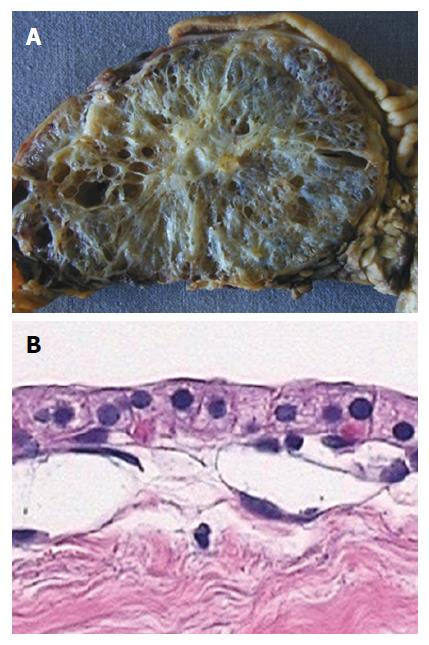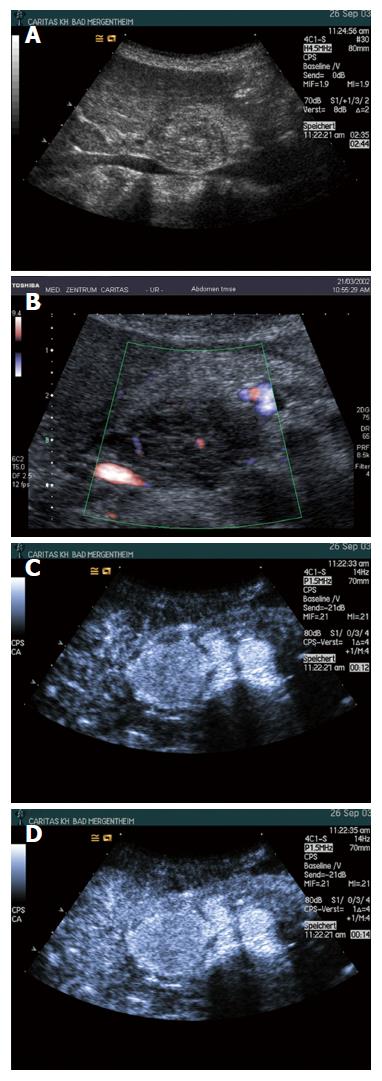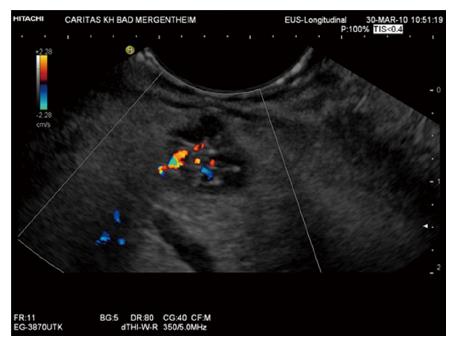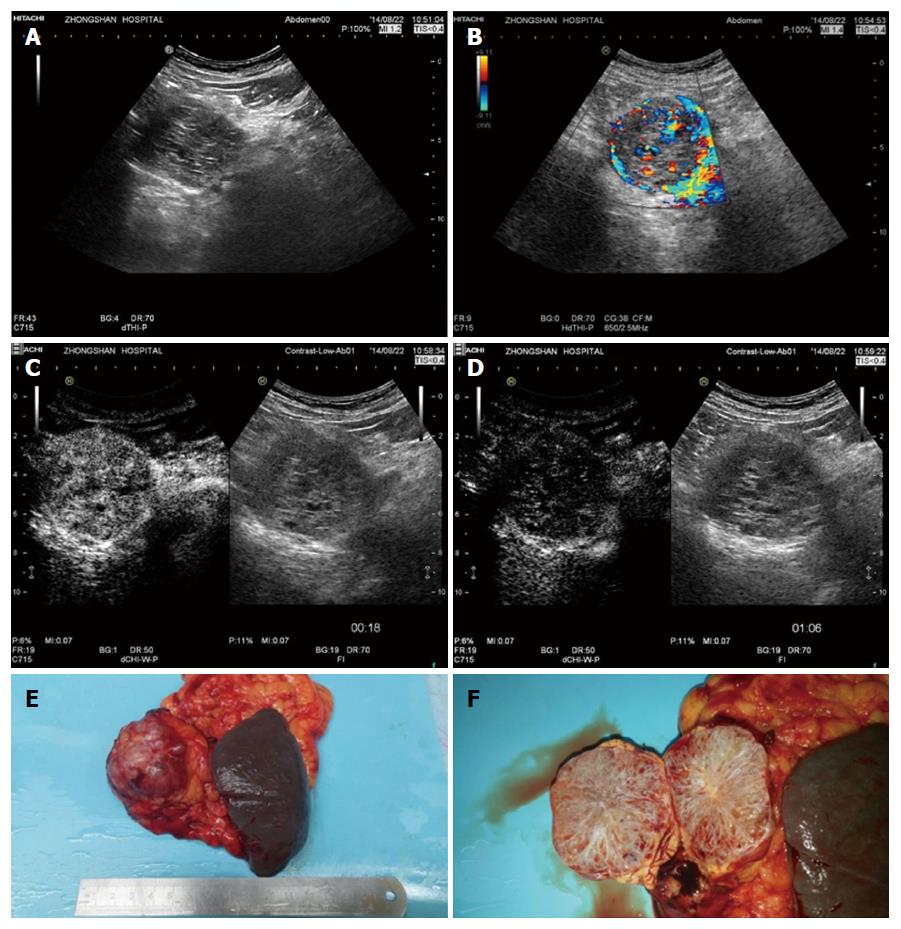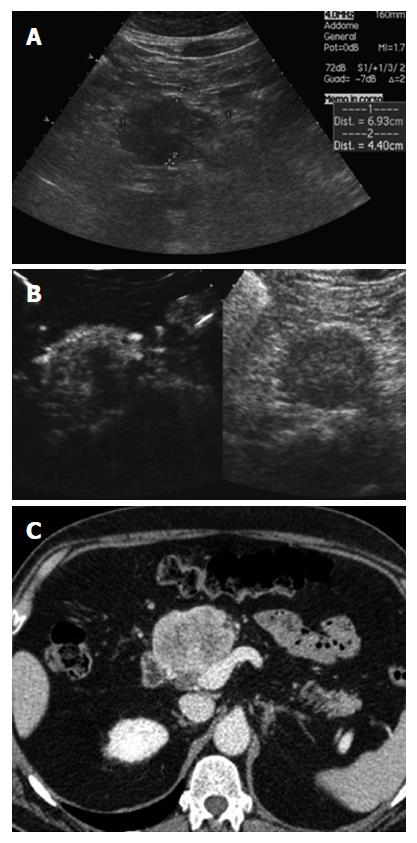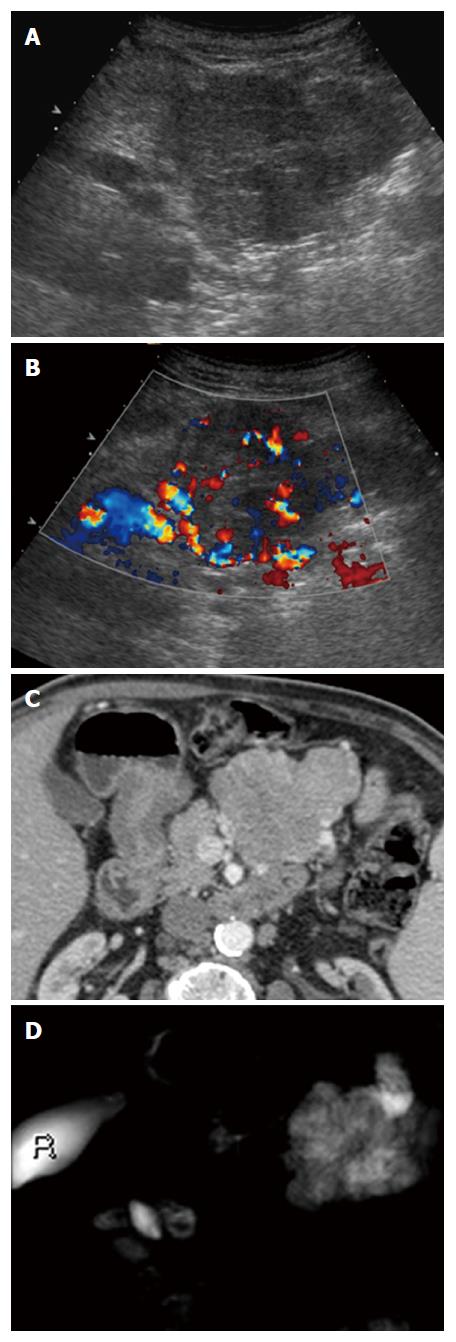Copyright
©The Author(s) 2017.
World J Gastroenterol. Aug 14, 2017; 23(30): 5567-5578
Published online Aug 14, 2017. doi: 10.3748/wjg.v23.i30.5567
Published online Aug 14, 2017. doi: 10.3748/wjg.v23.i30.5567
Figure 1 Macro- and micro-pathology (histology, cytology) of microcystic pancreatic adenoma.
A: Typical microcystic appearance of serous cystadenoma with “honeycomb” architecture, and central scar with small calcification; B: Histology demonstrates the typical single layer of clear cuboidal epithelial cells lining the cysts.
Figure 2 Typical microcystic serous pancreatic neoplasia using colour Doppler imaging.
Note the centrally located artery.
Figure 3 Typical microcystic serous pancreatic neoplasia using B-mode (A), colour Doppler imaging (B), and contrast enhanced ultrasound (C and D).
Note the centrally located artery and the typical hyperenhancement.
Figure 4 Typical oligocystic serous pancreatic neoplasia using endoscopic ultrasound.
Figure 5 Histopathologically proven serous microcystic serous pancreatic neoplasia.
A: A solid-cystic lesion was detected in the head of pancreas with B-mode ultrasound; B: Multiple interlesional color flow signals were detected using colour Doppler imaging; C: Contrast enhanced ultrasound showed the lesion to hyperenhance in the arterial phase; D: Isoenhance in the late phase; E and F: Surgical pathology shows the typical honeycomb structure.
Figure 6 Pseudo-solid serous pancreatic neoplasia, histologically demonstrated to have a microcystic structure.
A: B-mode ultrasound shows a solid hypoecoic mass in the neck of the pancreas; B: Contrast enhanced ultrasound shows the lesion to hyperenhance with a hypoechoic defect in the center; C: Computed tomography shows the lesion as solid and inhomogeneously hyperenhancing.
Figure 7 Large pseudosolid serous pancreatic neoplasia.
A: With B-mode ultrasound a huge mass is visible appearing solid and inhomogeneously hypoechoic; B: Doppler shows large arterial vessels within the mass; C: With Computed tomography the lesion appears pseudosolid with inhomogeneous slight enhancement; D: Magnetic resonance imaging clearly shows the cystic nature of the mass with microcystic appearance.
Figure 8 Unilocular serous pancreatic neoplasia.
A: B-mode ultrasound shows a cyst in the body of the pancreas; B: Magnetic resonance imaging shows small cystic lesions in the body of the pancreas not communicating with the main pancreatic duct.
- Citation: Dietrich CF, Dong Y, Jenssen C, Ciaravino V, Hocke M, Wang WP, Burmester E, Moeller K, Atkinson NS, Capelli P, D’Onofrio M. Serous pancreatic neoplasia, data and review. World J Gastroenterol 2017; 23(30): 5567-5578
- URL: https://www.wjgnet.com/1007-9327/full/v23/i30/5567.htm
- DOI: https://dx.doi.org/10.3748/wjg.v23.i30.5567









